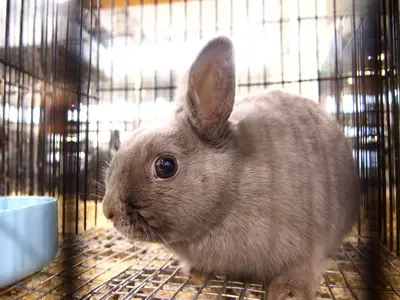Basic Appearance:
Polish are small, compact, round little rabbits with short, full heads and large expressive eyes. They are currently recognized in six colors, including black, chocolate, broken and white.
History, Temperament, and Common Uses:
Polish seem to have originated in England in the late 1800’s. They were brought to America early in the era of the rabbit fancy, and became the first small breed recognized by the American Rabbit Breeders Association.
As with other breeds that are widely raised, Polish from different lines can vary quite a bit when it comes to temperament. It is a good idea to research a breeder’s rabbits before making a purchase. While some Polish can be snippy, for the most part they are friendly and curious.
Polish are popular show rabbits. They are raised and shown by adults and children alike. Their small size makes them easy to handle and easy keepers as well.
Polish can also make good pets. They are small enough to be easy to handle, and don’t require a lot of space.
Grooming, Care, and Additional Notes:
As with other short-haired breeds, Polish require little grooming. Simply giving your rabbit a quick brushing with a soft brush or damp hands should be enough to keep him looking his best. Polish will need more grooming during a molt. Rabbits usually need their claws clipped once a month.
Polish At A Glance…
Recognized Varieties:
Black, blue, broken, chocolate, blue eyed white, and ruby eyed white.
ARBA Body Type:
Compact
Approximate Size:
Up to 3 1/2 pounds. Ideally 2 1/2 pounds.
Important Things to Look for When Buying Show Stock:
A small, compact rabbit. Polish should be close coupled with smooth, well-rounded back and hips. When viewed from above there should be a taper from the widest point at the hindquarters to the slightly narrower shoulders. The topline should curve upwards gradually from the base of the ears to the highest point over the hips. From there it should round smoothly down to the base of the tail. Does may have a small pencil line, which is a small fringe of long fur under their chin.
A Polish’s head is very important. It should be short, with well-filled cheeks and muzzle. It will be slightly broader in bucks than does. In profile there should be a slight curve from the base of the ears down to the nose. Look for slight roundness between the eyes. The ears should be small and balance with the rest of the rabbit. They should be of good thickness, close together, and touching each other all the way up. Polish eyes are very distinctive. They should be large, bold, bright, and expressive.
Polish should be fine boned, with short legs.
Look for flyback fur, short, dense, and glossy.
Things to Avoid:
Long body, protruding hips or spine, flatness over the hips. A dewlap is a disqualification. The head should not resemble a Netherland dwarf’s. It should not be round from all directions, pointed, pinched or flat. It should not be concave between the eyes. Ears should not cross each other, be bent, spread in a “V,” or poorly furred. Ears over 3 inches in length are a disqualification. Any colored toenails on white rabbits, or any white toenails on colored rabbits, is a disqualification. Coat that feels cottony or harsh, or long coat. A rollback coat is a disqualification.


